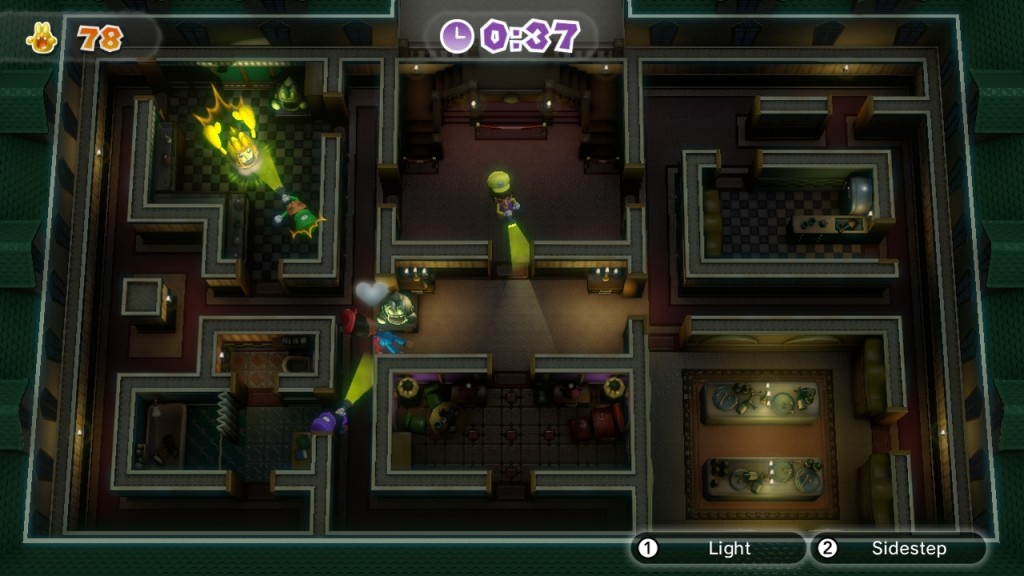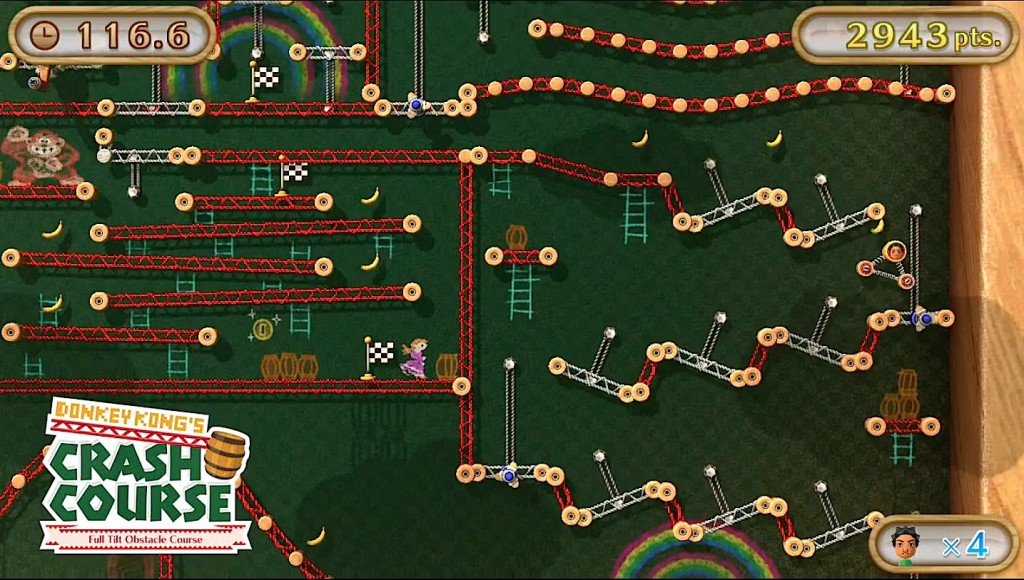Last updated on July 28, 2014
33 for God is not a God of confusion but of peace, as in all the churches of the saints.
1 Corinthians 14
One of the things that strikes me about Christianity most comes in the drive towards clarity. No matter what culture you find yourself, Christianity makes sense on some level; it may adapt to its culture environs, or it may mere present itself as is, but the Gospel message seems to transcend culture itself with the way it spreads to just about every sort of person.
While Paul meant to talk about confusion in regards to tongues and prophecy, we could very much apply this to the religion as a whole. Clear statements remain clear; we lack details, sure, but we do not lack for direct answers on many topics, from salvation itself to God’s working in human history. What inspirational leader hasn’t been clear? What movement rests on mixed principles? Just compare Occupy Wall Street with the Civil Rights Movement, and you’ll see it.
In the video game world, we can see the exact opposite of clarity in Nintendo’s earlier Wii U strategies. Sure, they’ve seen that their device appeals to the hardcore gamer (bold for emphasis!), but they didn’t think so at first. The Wii U was supposed to apply to everybody, and the launch games reflect that. Nintendo Land tries to fill the same spot which Wii Sports filled during the heady days of the original Wii for the newly crowned Wii U. As par for the course in Nintendo’s vision, it demonstrates a lot of the unique features of the bizarre and unwieldy GamePad. At the same time, it also demonstrates the big problem with the Wii U in general: who, exactly, does this device appeal to?
Let’s discuss this GamePad first. Think of it as a combination Wiimote and Classic controller all in one with a pretty slick HD screen with touch controls (and a stylus to boot). As a concept, you’d imagine that the device would turn out like a monster of streamlined design, and Nintendo achieves exactly that somehow. I’ve played a number of games with the device so far apart from Nintendo Land, and nearly all of them function well, but none of them bother to take advantage of the unique qualities of the device.
Nintendo Land tries to show Wii U owners and developers alike of its possibilities, and it functions extremely well in that regard. Think of Nintendo Land as a glorified minigame collection which derives game mechanics and themes from a number of different Nintendo properties. Some will provide you with a fun pick-up-and-play multiplayer experience, while others emphasize a single-player skillset requiring the GamePad. If you bought a Wii U, you more than likely own this title already, and it certainly contains enough entertainment within it. Some games also end up with slight variations depending on the number of players (up to five for the multiplayer games), but the general concepts below should apply.
I especially like the game which treat the GamePad as an essential device. Take Luigi’s Ghost Mansion, for example – it pits up to four players against one ghost. The ghost can only be defeated by shining lights on him/her; at the same time, those four ghost hunters can only use the flashlights until their batteries run out, in which case they’re quite vulnerable. The ghost, on the other hand, remains completely invisible but can be sensed via controller vibrations of the other players. The player using the GamePad looks at their own private screen to manipulate their opponents into disadvantageous positions via their ghoulish vibrations, and also by revealing themselves on the bigger screen as a misdirect. The whole experience turns into a tense game of cat and mouse, and I found it immediately brilliant just from a few plays.
Similar game tries for the same tension, but somehow fall flat. Mario Chase, for example, does the exact same hide-and-seek with a bigger board and faster movement speed, yet the maps feel far too large. It’s exactly like a glorified game of hide and seek with a limited camera range for the findees, and that makes finding the Mario more frustrating than fun.
Animal Crossing: Sweet Day makes the GamePad player control two different people at once to tackle the other players, who must gather 30 sweets in order to win. Gathering those sweets also slows them down (as does being tackled), and if all players get tackled a total of three times, that team loses. As such, players being chased can drop their sweets if necessary, providing some strategic depth to outmaneuvering the GamePad player. I found myself enjoying this one, but the map’s too wide for one player to keep track of four players. This one barely requires the GamePad, to be honest, but it does enhance the game by giving different perspectives for each player’s optimal viewing.
The Legend of Zelda: Battle Quest turns the GamePad into a bow-and-arrow simulator. It requires the player to maneuver the GamePad’s unique motion detection and camera properties to aim arrows while the other players fight with their swords. As a cooperative game, the strategies of success take some work (archers from afar remain hard to see, all said, without a degree of memorization), but the GamePad improves an otherwise rout minigame. The same principle applies for Metroid Blast, which turns you into Samus’ spaceship with appropriate simulation joystick controls…except with a bigger device in your hands. Frankly, this one doesn’t excite me all that much, given the number of interesting concepts that exist in the Metroid series already.
Pikmin Adventure adapts the Pikmin formula to a multiplayer game, and not much seems lost in the process. The GamePad player is Olimar, who uses fake Pikmin to attack with the Stylus and touchscreen. The other players present big Pikmin who can attack other objects, and they also function the same as other Pikmin if Olimar uses the whistle. Throwing Pikmin is about the gist of the experience, and a strange leveling system accompanies nectar gathering, but nothing fundamentally new emerges here. Pikmin 3 players pretty similarly, now that I think about it!
How about the single player games? None of them really amaze you in the same way the Wiimote did back in its day, but all of them show you a good time for sure. One set simply use the motion controls in a similar fashion to the initial Wii Sports lineup. Captain Falcon’s Twister Race doesn’t copy the speed of F-Zero, but its unique table-esque control scheme forces you to shift the gamepad left and right while holding it sideways to steer on an ever-increasing difficulty curve. Takamaru’s Ninja Castle does a similar thing with aggressive combat, making you slide your finger to replicate shuriken throws and sword swipes (that’s probably as close as you’ll get to Wii U’s version of Red Steel). Donkey Kong’s Crash Course applies the same concept to a motion controller wheel thing (hard to describe) which you navigate by tilting the GamePad from side to side while manipulating switches with the shoulder buttons. Because you’re so fragile, you need some precision to prevent yourself from going too fast or falling on your head, both of which drain lives.
The other games, on the other hand, take more advantage of having a touch screen on a home console. Yoshi’s Fruit Cart tasks you with drawing a safe path with the Stylus around an obstacle course collecting fruit. The trick is that you can’t see any of the items or obstacles on the GamePad, so you need to draw a general direction; I’m intrigued by this concept, and it’s quite a challenge as it goes on. Balloon Trip Breeze, on the other hand, just uses the Stylus for control, with the occasional GamePad screen use to kill enemies. In any event, Balloon Trip Breeze functions like a glorified obstacle course, which doesn’t diminish its fun but does remove its uniqueness. I suppose Octopus Dance also uses the GamePad screen, but that boils down to a dual-analog stick rhythm game – not exactly compelling stuff for a system seller.
And that, as a whole, sort shows off the Wii U as a strange system. These games run the gamut, trying to appeal to people with both Nintendo nostalgia and unique game mechanics, but I would only call half of them compelling because of the GamePad. What makes the system compelling as a result? As a metaphor for Nintendo’s strategy this generation, riding high off the casual-heavy success of the Wii, what more could you say? There’s a whole lot of confusion, and not a whole lot of direction here. That doesn’t mean that Nintendo Land isn’t enjoyable, just unfocused.


